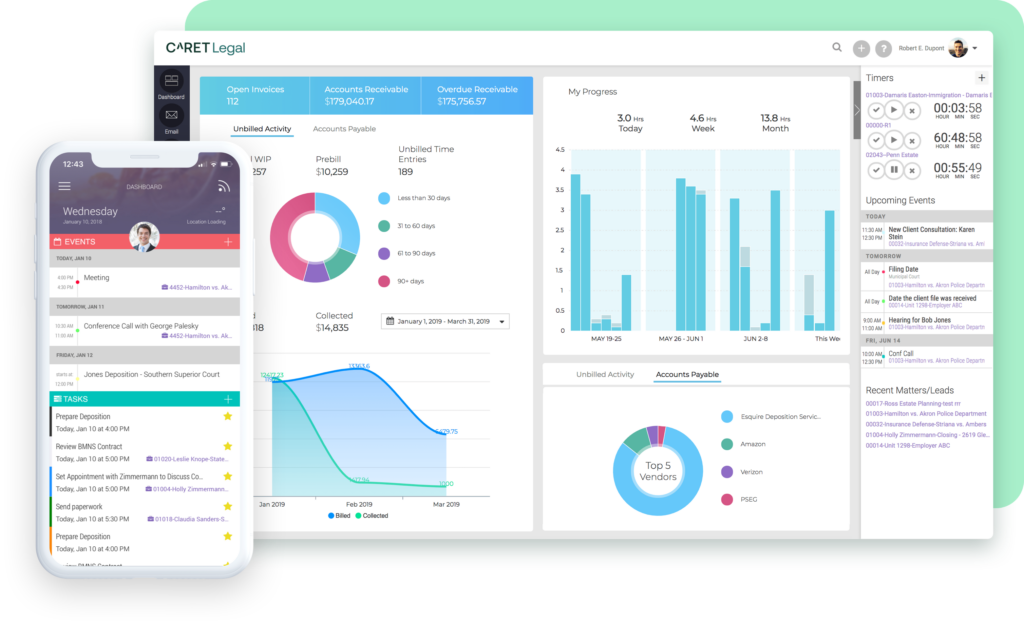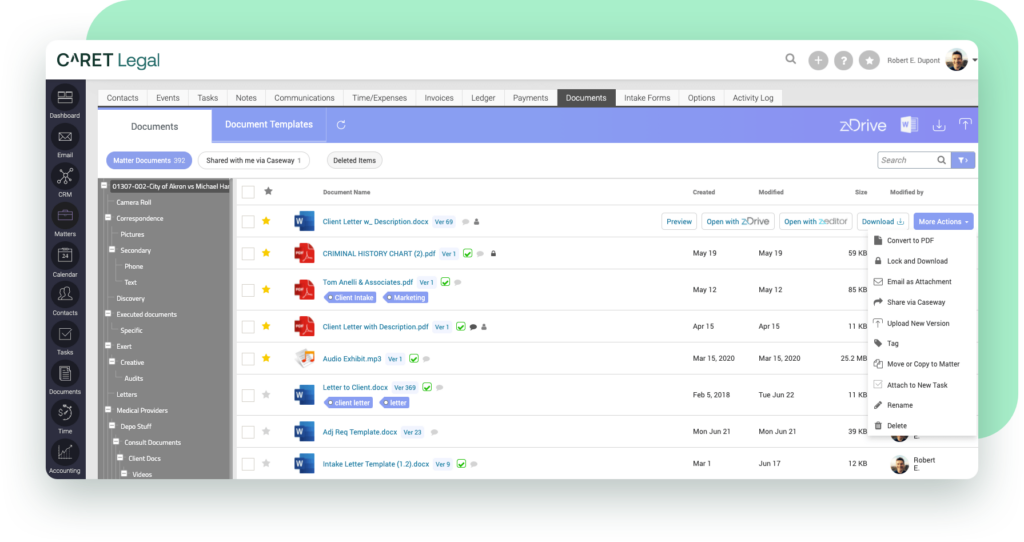Balancing workloads effectively is crucial not only for the success of your firm but also for the well-being of your team.
As the owner of a law firm, you are no stranger to the intense workloads that your litigation and corporate teams face on a daily basis. From managing complex cases to negotiating high-stakes transactions, your teams are constantly juggling a variety of tasks. Balancing these workloads effectively is crucial not only for the success of your firm but also for the well-being of your team. In this post, we’ll delve into some strategies to help you achieve this balance, with a special focus on how a law firm management system can be a game-changer.
Understanding the Workload
Before we dive into solutions, let’s first understand the nature of the workload in your firm. Litigation teams often grapple with unpredictable and urgent matters that require immediate attention. The process involves case assessment, drafting pleadings, discovery, pre-trial preparations, trials, and post-trial work.
In the initial stages of case assessment and development, lawyers spend a significant amount of time meeting with clients, understanding their needs, and assessing the merits of the case. Drafting pleadings involves careful research, writing, and review, which can be time-consuming. The discovery phase is often the most time-intensive, involving the exchange of relevant information between the parties, which can sometimes involve reviewing thousands of documents. Pre-trial preparations and the trial itself can also be quite intensive and require a high level of attention.
On the other hand, corporate teams deal with more predictable, project-based work, including planning and structuring, due diligence, drafting and negotiation, closing, and post-closing tasks. The initial planning and structuring require an understanding of the client’s objectives and developing a plan for the transaction. Due diligence can take several weeks or even months as it involves a thorough review of the company involved in the transaction. Drafting and negotiation are also time-consuming processes that require a high level of attention to detail.
Each process in both litigation and corporate law requires a significant amount of attention and time. The workload can be overwhelming, leading to burnout and decreased productivity. But don’t worry, let’s explore how we can manage this effectively.
Balancing Workloads: The Human Touch
Balancing workloads starts with understanding each team member’s capacity and strengths. Regular check-ins and open communication channels can help identify who is overloaded and who has the capacity to take on more work. Work can then be reallocated accordingly. For example, if a lawyer in your litigation team is spending a significant amount of time on discovery for a complex case, some of their other tasks could be reassigned to other team members to ensure a balanced workload. Training and skill development can also help your team members handle their work more efficiently. For instance, providing training on effective research methods or negotiation techniques can help your team complete their tasks more quickly and effectively, reducing their overall workload.
However, while these strategies are essential, they may not be enough on their own. This is where technology comes in.
Embracing a law firm management system is less about becoming tech-savvy and more about becoming team-savvy.
Embracing Technology
You might be thinking, “I’m not tech-savvy, how can I use a law firm management system?” But don’t worry, these systems are designed to be user-friendly, even for those with little to no tech knowledge. They can help you streamline your processes, manage your team’s workload more effectively, and ultimately, improve your firm’s productivity.

Let’s delve into some key features of a law firm management system that can help balance workloads across your litigation and corporate teams:
- Automated Task Assignment: Automating tasks can be a game-changer in boosting productivity within your firm. By setting predefined rules, you can ensure that tasks are assigned to the appropriate team members based on specific criteria such as their role in the firm.
- Case Management: This feature provides a real-time overview of each case, showing which tasks have been completed, which are in progress, and which are pending. This allows you to monitor the workload of each team member and redistribute tasks if necessary.
- Time Tracking: By recording the time spent on each task, you can gain insights into how work is distributed among your team. If a team member consistently spends more time on tasks than others, it may indicate that they are overloaded and that their tasks need to be redistributed.
- Document Management: A centralized location for all case-related documents saves time that would otherwise be spent searching for documents. This allows your team to work more efficiently, reducing their workload.
- Reporting and Analytics: Robust reporting provides detailed insights into your team’s performance and productivity. It can help you identify who is overloaded and who has capacity, enabling you to balance workloads more effectively.
- Calendar and Scheduling: This tool is essential for managing your team’s schedule and balancing workloads. It enables users to schedule appointments and court dates, check deadlines, and share availability, whether they’re in the office or on the go. Reminders and alerts can be set for various events, ensuring that nothing is missed.

Keep track of important case-related documents in one place
Embracing a law firm management system is less about becoming tech-savvy and more about becoming team-savvy. It’s about leveraging technology to support your team, streamline processes, and balance workloads. With the right system, you can turn the challenge of balancing workloads into an opportunity for increased efficiency and productivity. Remember, the future of law is not just about arguing cases or negotiating deals; it’s also about harnessing technology to work smarter and better.
Balance the Workload Scales Today
Balancing workloads across your litigation and corporate teams is no easy task, but with the right strategies and tools, it is achievable. CARET Legal can be a powerful ally, helping you modernize processes, manage workloads effectively, and improve productivity. It’s about working smarter, not harder.
So why not take the leap and embrace technology? Start this transformative journey today by signing up for a free trial of CARET Legal’s law firm management system.
